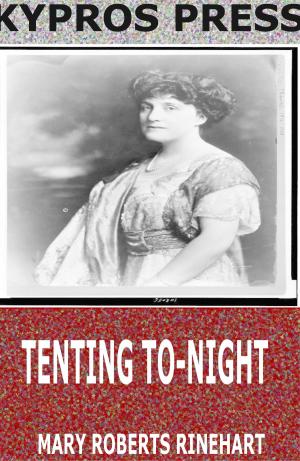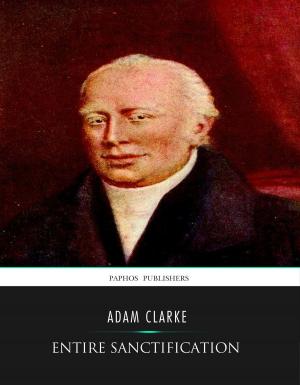| Author: | Charles River Editors, Ethel Raymond, Benjamin Drake | ISBN: | 9781475321548 |
| Publisher: | Charles River Editors | Publication: | January 31, 2013 |
| Imprint: | Language: | English |
| Author: | Charles River Editors, Ethel Raymond, Benjamin Drake |
| ISBN: | 9781475321548 |
| Publisher: | Charles River Editors |
| Publication: | January 31, 2013 |
| Imprint: | |
| Language: | English |
Includes:•Charles River Editors original biography of Tecumseh• Life of Tecumseh , and of His Brother the Prophet; with a Historical Sketch of the Shawanoe Indians by Benjamin Drake• Tecumseh a Chronicle of the Last Great Leader of His People by Ethel T. RaymondThroughout the 19th century, American settlers pushing across the Western frontier came into contact with diverse American tribes, producing a series of conflicts ranging from the Great Plains to the Southwest, from the Trail of Tears to the Pacific Northwest. Indian leaders like Geronimo became feared and dreaded men in America, and Sitting Bulls victory over George Custers 7th Cavalry at Little Bighorn was one of the nations most traumatic military endeavors. Given this history, Tecumsehs reputation among Americans has been both the most unique and anomalous. As the leader of the Shawnee, Tecumseh was the most famous Native American of the early 19th century, and he attempted to peacefully establish a Native American nation east of the Mississippi River in the wake of the American Revolution. While Native Americans, especially in the old Northwest (present-day land west of the Appalachian Mountains and east of the Mississippi River), understood and recognized their own, long established territories and those of other tribes, these boundaries and territories were ignored and unappreciated by the incoming settlers. Together with his brother Tenskwatawa, Tecumseh was in the process of forming a wide-ranging, Native American confederacy that they hoped would stem the westward flow of Anglo-American settlers and essentially establish a nation of Native Americans that would be recognized and accepted by the advancing European-American settlers. As settlers continued to encroach further west, however, Tecumseh stood firm and ready to fight them. Before America fought Britain in the War of 1812, they were engaged in Tecumsehs War around the Great Lakes. The fighting made the Indian leader famous and made a military hero (and eventually a president) out of William Henry Harrison, whose victory at Tippecanoe is considered the end of that war. Undeterred, Tecumseh allied with the British during the War of 1812 against the Americans, and he continued to fight on until he was killed at the Battle of the Thames. Without their leader, Tecumsehs Confederacy began to rapidly disintegrate. Despite being one of their most tenacious opponents, Tecumseh almost immediately became a celebrated folk hero and respected leader in American history, all while continuing to be one of the most poignant symbols of resistance among Native Americans. The Ultimate Tecumseh Collection chronicles the amazing life of the Native American leader, examines his leadership of the Shawnee Confederacy, and analyzes his enduring legacy. This collection includes three biographies, a bibliography, and pictures depicting Tecumseh and important people, places, and events.
Includes:•Charles River Editors original biography of Tecumseh• Life of Tecumseh , and of His Brother the Prophet; with a Historical Sketch of the Shawanoe Indians by Benjamin Drake• Tecumseh a Chronicle of the Last Great Leader of His People by Ethel T. RaymondThroughout the 19th century, American settlers pushing across the Western frontier came into contact with diverse American tribes, producing a series of conflicts ranging from the Great Plains to the Southwest, from the Trail of Tears to the Pacific Northwest. Indian leaders like Geronimo became feared and dreaded men in America, and Sitting Bulls victory over George Custers 7th Cavalry at Little Bighorn was one of the nations most traumatic military endeavors. Given this history, Tecumsehs reputation among Americans has been both the most unique and anomalous. As the leader of the Shawnee, Tecumseh was the most famous Native American of the early 19th century, and he attempted to peacefully establish a Native American nation east of the Mississippi River in the wake of the American Revolution. While Native Americans, especially in the old Northwest (present-day land west of the Appalachian Mountains and east of the Mississippi River), understood and recognized their own, long established territories and those of other tribes, these boundaries and territories were ignored and unappreciated by the incoming settlers. Together with his brother Tenskwatawa, Tecumseh was in the process of forming a wide-ranging, Native American confederacy that they hoped would stem the westward flow of Anglo-American settlers and essentially establish a nation of Native Americans that would be recognized and accepted by the advancing European-American settlers. As settlers continued to encroach further west, however, Tecumseh stood firm and ready to fight them. Before America fought Britain in the War of 1812, they were engaged in Tecumsehs War around the Great Lakes. The fighting made the Indian leader famous and made a military hero (and eventually a president) out of William Henry Harrison, whose victory at Tippecanoe is considered the end of that war. Undeterred, Tecumseh allied with the British during the War of 1812 against the Americans, and he continued to fight on until he was killed at the Battle of the Thames. Without their leader, Tecumsehs Confederacy began to rapidly disintegrate. Despite being one of their most tenacious opponents, Tecumseh almost immediately became a celebrated folk hero and respected leader in American history, all while continuing to be one of the most poignant symbols of resistance among Native Americans. The Ultimate Tecumseh Collection chronicles the amazing life of the Native American leader, examines his leadership of the Shawnee Confederacy, and analyzes his enduring legacy. This collection includes three biographies, a bibliography, and pictures depicting Tecumseh and important people, places, and events.















